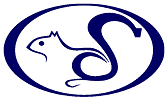|
|
If you've searched the Knowledge Base and not found your answer, you may ask
a new question of technical support.
More Instructions...
|
WebWhacker 5.0
Q: What is a firewall or proxy server?
A: A firewall acts as a security barrier between
your internal network and the Internet, keeping
other people on the Internet from gaining access
to confidential information on your internal
network.
Top
Q: What is WebWhacker's Proxy server?
Can I access whacked sites using an "HTTP://" Url
instead of typing the path to the file?
A: Running WebWhacker's local proxy server allows
you to use Urls (http://www...) in your browser.
WebWhacker's local proxy server will intercept
the request and look up the Url in its database.
If there is a match, WebWhacker's local proxy
server will serve up the correct file just like a
web server would.
In WebWhacker go to the Tools menu and select
Options, then click on the Proxy Settings tab,
and select "Enable Local Proxy Cache".
Top
Q: What proxy servers does WebWhacker support?
A: WebWhacker supports CERN, Authenticated CERN,
SOCKS 4, and SOCKS 5!
Top
Q: How do I know if my computer is behind a firewall?
A: If your Web browser is working correctly, you can
look at its configuration to see if it is
configured for a firewall. First, make sure
WebWhacker is not running.
In Internet Explorer 5.0 select Tools then
Internet options. In the Connections tab select
LAN Settings. In the Proxy Server section a check
box is listed next to Use Proxy Server. If this
is selected than you are using a proxy server and
the address and port numbers will be listed just
below it. If you do not have Internet Explorer
5.0 and you would like to install it please click
here.
In Netscape Communicator 4.x select Edit then
Preferences. In the Preferences window select the
last item on the list, Advanced. In the Advanced
dialog box select Proxies, and it will display
whether you have a Direct Connection to the
Internet, Manual Proxy Configuration or Automatic
Proxy Configuration. If Direct Connection to the
Internet is selected than you do not have a
proxy. If Manual Proxy Configuration is selected,
you can click on View... to see the Address and
Port Number of the proxy server. If Automatic
Proxy is selected it will display the proxy
configuration settings. If you do not have
Netscape Communicator 4.5, and you would like to
install it please click here.
Please note, you do not have to have Internet
Explorer 5.0 or Netscape Communicator 4.5 to run
a proxy, it will run on various versions of
browsers.
Another way to determine if your computer is
behind a firewall is to ask your Network
Administrator.
Top
Q: I can see the page in my browser, but WebWhacker
can't whack it?
A: WebWhacker maintains its own connection to the
Internet that is separate from your Web browser's
connection to the Internet. One possible problem
is that the proxy server information is not
correctly entered into WebWhacker. To view what
has been set, select Tools / Options..., and
click on the Proxy tab. If you are behind a
firewall, that proxy server's IP address and Port
number should be in the Remote Proxy fields.
Top
Q: What do I enter in WebWhacker as the proxy server?
A: Enter your Browser's proxy server information
into WebWhacker by selecting Tools, Options and
clicking on the Proxy Server tab. If you do not
know your proxy server information please refer
to question 22.
Top
Q: Where do I enter 127.0.0.1 as the proxy server?
A: If you turn on WebWhacker's local proxy cache it
automatically reconfigures your Web browser to
use WebWhacker as the proxy server. The IP
address of 127.0.0.1 and Port number of 8080
tells the Web browser to look on your own
computer for the proxy server, and that's where
it will find the whacked data.
The only place where 127.0.0.1 should be entered
is in your Web browser. That IP address is never
to be entered into WebWhacker. (Unless importing
WebWhacker 3.2 data.) If 127.0.0.1 is entered
into WebWhacker, it will not work correctly.
Top
Q: My Web browser has the name of a computer as a
proxy server instead of an IP address. Why does
WebWhacker not work correctly?
A: Some PC configurations require that WebWhacker
use the IP address of the proxy server instead of
the computer name. The solution is to add the IP
address of the proxy server to WebWhacker by
selecting Tools / Options... and entering it on
the Proxy Server tab. If you don't know the IP
address of the computer that is your proxy
server, ask your Network Administrator.
Top
Q: What if my proxy server requires a username and
password?
A: No problem, simply fill in your username and
password on the Proxy tab located under Tools and
Options.
Top
Q: After installing and using WebWhacker, can I
access the Web without WebWhacker?
A: Yes, you can. When WebWhacker quits, it changes
the proxy server information in your Web browser
back to the way it was before you started running
WebWhacker.
Top
Q: Why can I not access the Web without WebWhacker?
A: One possible reason is that WebWhacker did not
have the opportunity to change the proxy server
information in your Web browser back to its
original state. To fix this problem, restart
WebWhacker then exit. If this did not fix your
problem, then make sure WebWhacker is not started
and either remove the proxy server information
from your Web browser or change it back to its
original setting.
Top
|
|
 Blue Squirrel
Blue Squirrel
 Blue Squirrel
Blue Squirrel